#lighting products manufacturers China
Text
A chandelier can be an ideal option for lighting in your home. Not just for foyers and formal dining areas, but chandeliers can also be used to provide lighting in kitchens, bedrooms, as well as the children's room. But before you go out and look for that perfect chandelier, here are some things that you need to consider.
Criteria For Buying Chandeliers
1) Size of the chandelier: The most important element to consider is the size. If not sized correctly, a chandelier will not be able to provide lighting as desired and may well not fit into its designated spot. So here's what you need to know about sizing a chandelier.
When choosing a chandelier for a particular room, you need to first measure the width and length of the room. Add these two measurements and the resultant sum (in inches) is how wide your chandelier should be. For instance, if your room is 14 feet wide by 16 feet long, you need to add these two numbers which gives you 30. Thus, the ideal width for a chandelier for this room will be 30 inches. However, you also need to consider the height at which the chandelier will hang. If you have low ceilings and the chandelier will hang quite low, you should buy a slightly smaller one (26-28 inches). But, if you have really high ceilings, then you should go in for a bigger one (34-36 inches). This is because the higher the chandelier, the smaller it is going to appear.
Another important size consideration is the length. A chandelier should be at least 30 inches above the table that it will hang over. This is the optimum height as it is high enough to leave adequate room to place things under the chandelier and is low enough to provide the desired lighting. Thus, after subtracting 30 inches from the top of the table to the ceiling, and 3-4 inches for the chandelier hook, the space left can be used to decide the length of the chandelier. Once again, you can be a little flexible here. If you usually use very tall centerpieces on your table, you should choose a chandelier that is a little shorter.
2) Type of lighting required: The kind of lighting that you need is also an important criterion to consider. Here are the various types of chandeliers used to bring about different kinds of lighting:
Ambient Lighting: If you wish to achieve ambient (general) lighting, you should go in for a big one, which has plenty of bulbs and open lights. This will ensure that the chandelier provides light for the entire room.
Accent Lighting: If you want to place your chandelier over something specific so as to illuminate that object, or if you want it to provide you with accent lighting for specific areas, then you should choose one with spotlights and down lights. A spotlight will help you to focus lighting on special works of art and help to bring about their beauty. With down lights, you can provide accent lighting for tabletops and other specific areas.
Diffused Lighting: Many people like to have sober diffused lighting in their home. They do not like the glare of very bright lights. If you too desire such lighting, you should choose a chandelier with uplights. An uplight will throw light on the ceiling which then gets diffused and provides a very warm glow. You can also choose a chandelier with shades as this will help to maximize the light filtering down but reduce the glare at the same time.
Thus, once you have decided on what type of lighting effect you wish to achieve, you can select a chandelier accordingly.
3) Style of the chandelier: As it is most likely going to be the center of attention in any room, it is essential that you choose a chandelier that has a look and style which is in keeping with the rest of your décor. You do not want to draw attention to your chandelier for all the wrong reasons after all!
While a traditional crystal chandelier can look at home in almost any setting, if you want to go in for an ornate wrought iron chandelier, or perhaps a contemporary one, it is important to first determine that such a design will match your home décor. Remember, while choosing a chandelier style, you want to go in for one that matches your décor and not contrasts with it.
In addition to the above, ease of cleaning, number of bulbs (depending on how much lighting you require), and your budget are the other factors to consider when choosing a chandelier.
Robin is the publisher of All About Chandeliers, your guide to finding the perfect chandelier for your home. Go to All About Chandeliers - Your Chandelier Guide [https://cnrlighting.com/] and brighten up your home!
#lighting products manufacturers China#high-end decor lighting manufacturer#lighting products supplier china#luxury lighting manufacturer china#lighting products manufacturers china#luxury lighting supplier china
0 notes
Text
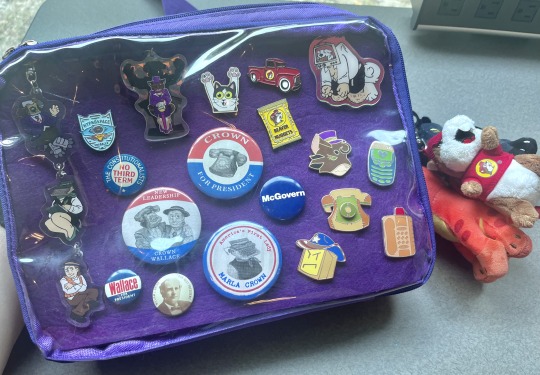

got some goodies from a new manufacturing company ive been wanting to try - melodycharms! :-] VERY happy with how they look
longer review & closeups under cut
OKAY so. ive been an avid vograce customer and supporter for the past few years, always recommending it to friends when asked, & have made consistent sales when working with them to make stuff for my shop
the only reason why i wanted to try another company was that their minimum order number is 3 for most products - which is a bit inconvenient when you just wanna get something for yourself
& melodycharms has the option to get only one! i got:
a double sided holographic keychain
a series connection keychain
a rainbow acrylic keychain, &
a "gold edge" keychain
it had a quick turnaround of only about a month, which is impressive considering it shipped from china to america
FIRST IMPRESSIONS : the box was securely packaged & easy to open! the thank you note is super cute ALBIET a bit too large, crinkling the edges. came with a melody sticker as well!

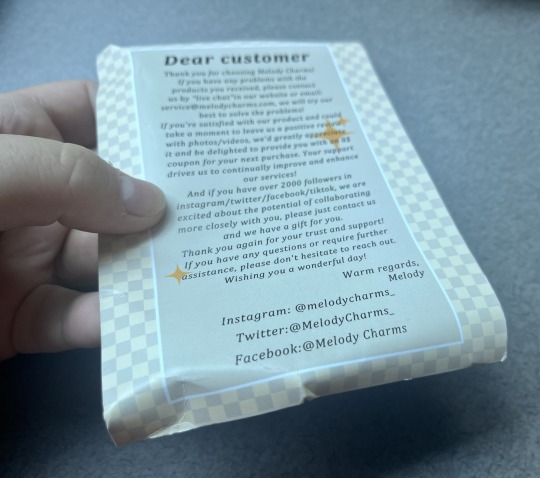
each keychain had a film, was then wrapped in a bag individually, and then they were all put in ANOTHER crinkly bag. lots of trash (fun to open, not as fun for the environment)
DOUBLE SIDED HOLOGRAPHIC KEYCHAIN


i got the broken glass variety only on the front (callums) side, which gives a SUPER cool effect when looking at it from the back. only negative effect is that the colors on the front are a bit duller in comparison, since the acrylic is thicker
SERIES CONNECTION KEYCHAIN
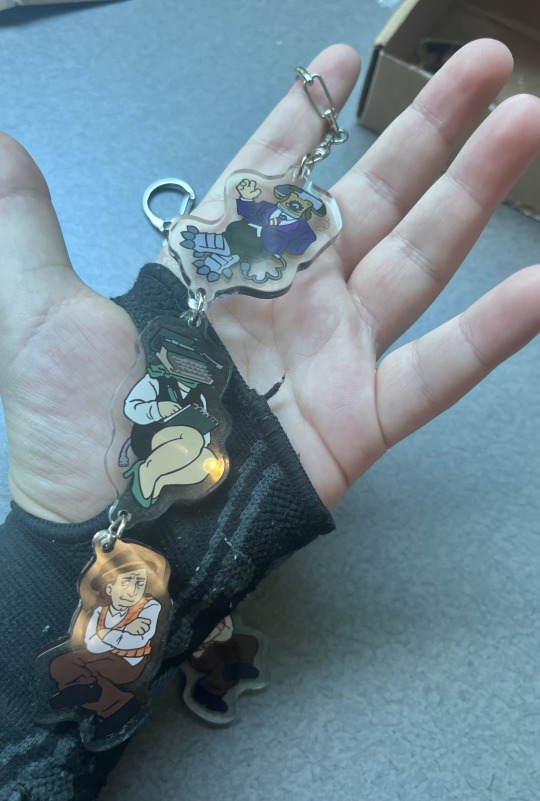

i dont know if i accidentally ordered two or they accidentally gave me two, BUT excellent surprise nonetheless! they look how i imagined, no complaints :-)
RAINBOW ACRYLIC KEYCHAIN


oooh yeah baby. SUPER happy with how this came out. i left the tv screen transparent on the image it sent, and it translated PERFECTLY to the semi transparent background. photos dont do it enough justice 10/10
GOLD EDGE KEYCHAIN
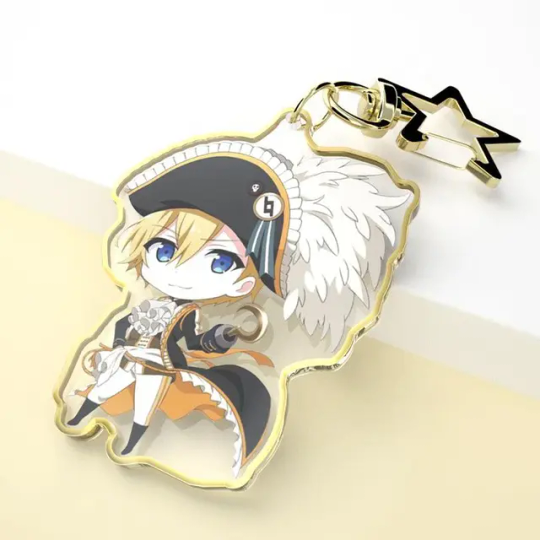
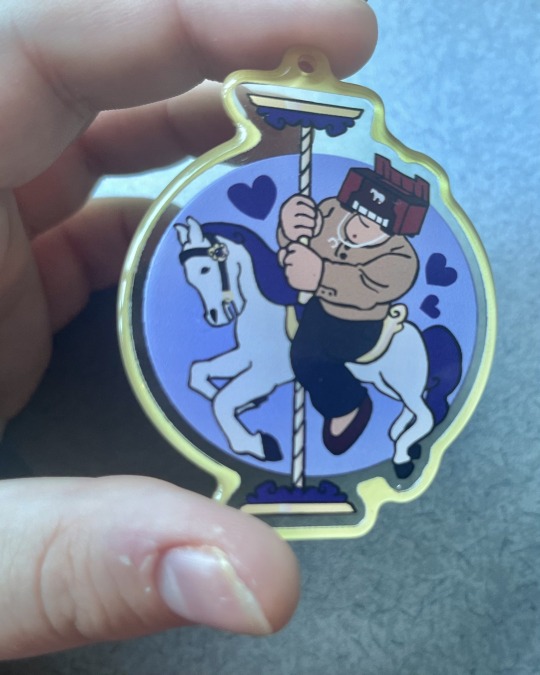
aah this one was less exciting to receive.. on the website, it looks like a raised, metallic edge on the keychain. in real life, its more like a flat outline. it reflects light like the rest of the keychain - but doesnt have the metallic golden look, instead just seeming yellow
additionally, it came without the accessory keychain so i cant hang it on my bag yet :-( i reached out to melody via their live chat, & got a reply within the 24 hours saying theyd send a replacement though
OVERALL : id rate melodycharms a 3.5/5! they get knocked for a mistake, no company is except from a whoopsie daisy - they were very kind and apologetic when i responded which matters more & i appreciate alot
#idkwhat to tag this as..uhnm#dialtown#yay :-)#i would still recommend vograce first if youre looking to sell keychains at a higher quality#but if youre on a budget (melodycharms is cheaper by like. >10 cents per charm) OR just want 1 keychainthen id definitely look into this !!
35 notes
·
View notes
Text
10 Thrifting tips the thrilling continuation
I am a dedicated thrifter and I have done a few thrifting tips posts, things to look for, how to find the best stuff. I had an excellent day thrifting today and decided it was a good day to polish up a draft I had and post it. So read more for tips to get the goodies.
If you buy fairly plain wooden furniture, it doesn’t take a whole lot of expertise to refinish it. You can get a cheap palm sander for less than 50 bucks, and a small tin of furniture wax goes a long, long, loooong way. Or you can get Danish oil if you want a satin finish or Teak oil for a gloss finish. Don’t let Youtube videos make you believe you have to test out 10 zillion different coloured stains unless you are aiming for a very specific look. Just make sure you slap something nourishing on the wood after you’ve sanded it. Also remember that whatever product you use; multiple light coats will come out better than one thick coat. There’s a huge amount of satisfaction in looking at a gorgeous chunk of wood you’ve bought back to life.
French milled/triple milled soap. Old ladies like to give soap as gifts and people tend to stick it in their drawer to scent their clothes and never actually use it, eventually they have a clean out and this unused soap goes to the thrift store still in it’s original paper wrapping. This soap is expensive. This soap is fantastic. The milling process creates a very different product than the bars you get at the supermarket. It doesn’t go goopy and melty even if you leave it sitting in a puddle in your shower, it’s not as drying to your skin, the scent stays on your skin for longer. These bars last for months, it’s well worth picking them up if you like the scent.
Blue Willow. Would you like to have a nice set of china but don’t want to drop a lot of money on something that might look dated in 10 years? Collect blue willow from thrift stores. Blue willow has been around for hundreds of years and it’s going to be around for hundreds more. It can be slotted in to almost any home style, classical, boho, maximalist, scandi, etc, etc. Because it’s been around for so long pretty much every manufacturer has done it, so you find it really often at thrift stores and it’s easy to pick up a couple of plates here and a serving bowl there. Also, because so many companies have done it over such a long period it’s possible to pick up modern dishwasher safe dinner plates that you can use alongside a lovely 100-year-old antique gravy boat.
Gifts. Never feel ashamed of buying gifts from thrift stores. The perfect vintage item is way more meaningful than any amount of new stuff. And if you’re buying for someone who doesn’t like vintage; if something looks new and undamaged how is the recipient going to know that it’s not new?
Get yourself a thrifting routine. You’re gonna find the best stuff if you go often so don’t just randomly go every now and then. People who say they never find anything are the ones who only call into a thrift store every couple of months and expect something amazing to just drop into their lap. Set a day once a week, or every other week or once a month, but make a commitment to go on a regular basis.
If you see something that you think you like but you’re not 100% sure, as long as you can afford it and have a place for it, get the thing. Take it home, live with it. Maybe you’ll decide you don’t really like it and take it back to the thrift store and consider the price you paid a charitable donation. But sometimes you bring something home that you kinda like and end up absolutely loving it. Some of my favourite things in my house are things I wasn’t completely sure about when I was in the thrift store. There’s nothing worse than the regret of leaving something behind because you weren’t sure about it, then deciding actually I do want that thing, but it’s gone, and you’ll never find another quite like it.
If possible, go with someone who knows your likes/tastes. It’s amazing the number of times I’ve been in a thrift store with my mother or best friend, and they’ve found something I love that I hadn’t even noticed. Plus they’ll be dirty rotten enablers and encourage you to buy the thing that you love but you’re not sure you can justify to yourself.
There are a bunch of Youtubers who do thrift flips. If there’s some décor item that’s in all the stores at the moment and you love it, but can’t justify spending money on it, then it might be worth looking up to see if anyone has done a thrift flip and can give you a tutorial on how to turn a thrifted item into the hot décor items of your dreams.
Keep the cycle going. If you have stuff in your home that you no longer use/love, then donate it. If you’ve traded up and found something better but your original thing still has life in it, donate. Even if you originally bought something from a thrift store no one is gonna be mad if you send it right on back (unless you’ve used it to death, and it really should be heading for landfill).
Don’t put yourself in a box. Don’t refuse to get something because it’s not ‘your style’. What is ‘your style’? Things that you love, that make you happy. Do you love this thing? Does it make you smile? Then it’s your style. Honestly style is something that evolves organically, that grows and expands as we’re exposed to new things. If you try to follow a certain style rigidly then you’ll end up with a home that looks boring and cookie-cutter. Throw in something unexpected that speaks to you. Then throw in another of those things and another and another and pretty soon you’ll end up with a home that actually is your style – maybe you just don’t know what your style really is yet. I think of myself as very confident in my style, but I’m constantly stumbling across new things that I didn’t know I needed in my life.
Part 1
Part 2
Part 3
322 notes
·
View notes
Text
Based on four poems by Xu Lizhi, a poet and Chinese Foxconn factory worker who committed suicide on September 30th, 2014. These poems not only bring to light the struggles of depression and suicide, but also the working conditions of those forced to be cogs in the machine of capitalism--a system fueled by blood.
Foxconn manufactures electronics which the civilized world adores and glorifies so much. Yet, the manufacturing is not the only source of blood in the process of such products. Nor is it the only case of oppression in the machine of capitalism. The system depends on, and would collapse without, oppression and death.
The realities that Xu faced in the factory are a reality for more than people would like to believe. Foxconn and other factories in China have erected nets around the windows of buildings to prevent suicides due to the high rate of suicide. Xu Lizhi's poetry provides insight into the working conditions that millions of people are forced to be in, as well as a critical lens of industrial capitalism.
Xu Lizhi's poetry.
23 notes
·
View notes
Text
One of the primary driving forces of the particular trade system designed in the 1980s and 1990s was always to allow multinationals the freedom to scour the globe in search of the cheapest and most exploitable labor force. It was a journey that passed through Mexico and Central America’s sweatshop maquiladoras and had a long stopover in South Korea. But by the end of the 1990s, virtually all roads led to China, a country where wages were extraordinarily low, trade unions were brutally suppressed, and the state was willing to spend seemingly limitless funds on massive infrastructure projects—modern ports, sprawling highway systems, endless numbers of coal-fired power plants, massive dams—all to ensure that the lights stayed on in the factories and the goods made it from the assembly lines onto the container ships on time. A free trader’s dream, in other words—and a climate nightmare.
A nightmare because there is a close correlation between low wages and high emissions, or as Malm puts it, “a causal link between the quest for cheap and disciplined labor power and rising CO2 emissions.” And why wouldn’t there be? The same logic that is willing to work laborers to the bone for pennies a day will burn mountains of dirty coal while spending next to nothing on pollution controls because it’s the cheapest way to produce. So when the factories moved to China, they also got markedly dirtier. As Malm points out, Chinese coal use was declining slightly between 1995 and 2000, only for the explosion in manufacturing to send it soaring once again. It’s not that the companies moving their production to China wanted to drive up emissions: they were after the cheap labor, but exploited workers and an exploited planet are, it turns out, a package deal.
A destabilized climate is the cost of deregulated, global capitalism, its unintended, yet unavoidable consequence.
This Changes Everything by Naomi Klein
109 notes
·
View notes
Text
On May 14, Washington slapped new tariffs on China in what looks at first glance like the latest round of a familiar trade spat. The White House imposed duties of 25 to 50 percent on a range of industrial, medical, and clean tech goods—including semiconductors, solar cells, batteries, steel, aluminum, graphite, magnets, syringes, and ship-to-shore cranes. Strikingly, the latest measures also include a whopping 100 percent tariff on electric vehicles, effectively shutting the U.S. market to Chinese-made EVs.
Seen from Washington, these measures also look like a political move as U.S. President Joe Biden courts blue-collar voters in industrial swing states such as Michigan and Pennsylvania ahead of the November presidential election. It’s unlikely, however, that Beijing shares this benign interpretation. Seen from China, the tariffs look like a serious escalation of the U.S.-China contest and are probably raising alarm bells. Here’s why.
1. Washington is playing the long game. Stories of how China has become the world leader in EV manufacturing and is flooding the world with cheap vehicles have flourished over recent months. At the global level, there certainly is something to this analysis. Chinese exports of EVs jumped by a whopping 80 percent last year, propelling China to the top of the global ranking of car exporters. Yet this does not apply to the United States, where China supplied just 2 percent of EVs sold last year. (U.S. consumers appear to have a distinct preference for South Korean, Japanese, and European EV imports.) In other words, a 100 percent tariff on a few thousand cars will not hit Chinese firms hard.
A closer look at the list of targeted sectors suggests that batteries, not cars, will be the real pain point for China. The U.S. market is important for Chinese battery firms, which supply around 70 percent of the lithium-ion batteries used in the United States. For China’s battery sector, this means that the impact of the latest U.S. tariffs will likely be huge: The usual rule of thumb is that a 1 percentage point increase in tariffs entails a 2 percent drop in trade. With tariffs rising from 7.5 percent to 25 percent, the rule suggests that Chinese battery firms’ U.S. sales could drop by around one-third—or by $5 billion when one includes the entire battery supply chain. With Chinese battery-makers already seeing their profits plummet amid softening global demand, this is certainly bad news for Beijing.
Crucially, batteries are also an area where the U.S. government is investing huge amounts of public funds, in particular through the Inflation Reduction Act, which seeks to boost U.S. domestic production of clean tech goods. Seen in this light, the latest U.S. tariffs are preemptive measures to protect a nascent clean tech industry and make sure that there is domestic demand for future U.S. production. This suggests that the United States is playing the long game here, with little chance the tariffs will be lifted anytime soon. On the contrary—the U.S. clean tech market could well be closed to Chinese firms from here on out.
2. The White House is trying to force Europe to come on board and impose similar tariffs on China. Biden is probably seeking to score electoral brownie points with a 100 percent tariff on EVs, making former President Donald Trump’s proposal for 60 percent on U.S. imports from China look almost feeble. (Not to be outdone, Trump just announced that he would apply a 200 percent tariff on Chinese-branded cars made in Mexico.) Yet the reality is that Biden’s tariffs will not prove game-changing in the short term: Their implementation will be phased in over two years, and supply chain adjustments typically take time. In short, the measures are unlikely to fuel a U.S. industrial boom in time for the November elections.
What will happen before the election, though, is the conclusion in June or July of the European Union’s ongoing anti-subsidy investigation into China’s EV makers. Rumors abound of a possible tariff of 20 to 30 percent on Chinese EVs. Such a prospect is probably unnerving for Beijing; the EU is the biggest export market for China’s EVs, absorbing around 40 percent of Chinese shipments. The United States hopes that its 100 percent tariff on EVs will compel the EU to not only follow Washington’s example in imposing a tariff on Chinese EVs but perhaps also consider a higher one. This bold strategy could well work. Europe is unlikely to enjoy having its arm twisted by Washington, but the bloc will also worry that Chinese EV makers could double down on their push to dominate the EU market now that they have lost access to the U.S. one.
Chinese EVs look set to be a key topic when G-7 leaders meet for their annual summit in June. The United States will probably try to cajole Germany, which has long been dovish vis à vis China, into supporting sharply higher tariffs. German Chancellor Olaf Scholz has pointed to the fact that European auto manufacturers “sell a great many vehicles that are produced in Europe to China”—hinting at German fears that China could retaliate against EVs and internal combustion engine cars imported from the EU.
3. The tariffs are a serious escalation from Washington’s previous de-risking strategy. In recent years, U.S. de-risking has focused on reducing the United States’ reliance on China for crucial goods and curbing Beijing’s access to dual-use technology in a bid to avoid fueling the country’s military advances. To implement this strategy, Washington has so far relied on two main tools from its economic statecraft kit: financial sanctions (for instance, on firms linked to the People’s Liberation Army) and export controls (notably on semiconductors, which are dual-use goods found in most military equipment).
Washington is slowly realizing that these two tools are imperfect. China’s massive sanctions-proofing efforts mean that sanctions do not always deal a blow to Chinese firms, which may no longer be using the U.S. dollar (China now settles around half of its cross-border trade in renminbi) or Western financial channels such as SWIFT, the global payments system. Washington also understands that export controls on clean tech would not curb China’s ambitions in the field, as Chinese firms already have all the tech they need. This leaves only one option for U.S. economic statecraft: tariffs that leverage one of the country’s greatest economic assets—access to its market.
This is why the latest U.S. tariffs are likely raising red flags in Beijing. The United States is now severing access to its market in clean tech and other areas that China sees as crucial for its plans to become the world’s future economic superpower. If the EU plays ball, this approach would expose a central flaw in Beijing’s industrial strategy: What if the world’s two biggest markets—the United States and the EU—become no-go areas for Chinese firms dependent on exporting their vast production, leaving them with piles of unused goods? Few other markets are available for Chinese clean tech exports—outside Europe, North America, and East Asia, most countries lack the infrastructure for large-scale EV adoption, for example. This prospect may well keep Beijing’s planners up at night, with no easy solution in sight.
The question now is whether and how Beijing will react. Serious retaliation is unlikely, since the United States exports far less to China than vice versa. Given its current economic woes, China also has little interest in further weakening its economy—for example, by imposing export bans on critical raw materials, rare earths, or other crucial goods for Western economies.
As the latest skirmish in the battle for economic dominance between Washington and Beijing, the new U.S. tariffs raise a number of bigger questions: Will Washington succeed in its efforts to create a domestic ecosystem for clean tech? Will the United States and Europe manage to cooperate—or go their own ways in their economic relations with China? Will the United States continue to curb Chinese access to the U.S. market for the purposes of de-risking—and if so, in which sectors? There is probably only one certainty in the U.S.-China economic war: The conflict will continue well after the November elections, whatever their outcome.
12 notes
·
View notes
Text
How to Do a Load Bank Test on a Generator?|EMAX Load Bank
Generators are critical assets for businesses and homes, providing essential backup power during outages. To ensure that a generator will perform as needed during an emergency, it is crucial to conduct regular maintenance and testing. One of the most effective ways to test a generator's performance is through a load bank test. This comprehensive guide will walk you through the steps of performing a load bank test on a generator, ensuring optimal performance and reliability.

What is a Load Bank Test?
A load bank test involves using a device known as a load bank to simulate electrical loads that the generator might encounter during operation. The test ensures the generator can handle its full rated capacity and helps identify any issues that could affect performance. Load bank tests are essential for maintaining the health of standby generators, ensuring they can provide reliable power when needed.

Why Perform a Load Bank Test?
Performing a load bank test has several benefits:
Verification of Performance: Ensures the generator can handle its maximum load without issues.
Identifying Potential Problems: Helps detect issues like wet stacking in diesel generators, which occurs when the engine doesn't reach optimal temperature.
Improved Reliability: Regular testing ensures the generator is reliable and ready for emergencies.
Compliance with Regulations: Some industries require regular load testing to comply with safety and operational regulations.

Types of Load Bank Tests
There are three primary types of load bank tests:
Resistive Load Bank Test: Simulates real-world loads such as lighting and heating. It is the most common type of test.
Reactive Load Bank Test: Simulates loads that include inductive (motors, transformers) and capacitive (capacitors) components.
Combined Load Bank Test: Uses both resistive and reactive loads to simulate the most realistic operating conditions.

Preparation for Load Bank Testing
Before performing a load bank test, follow these preparatory steps:
1. Review Manufacturer Guidelines
Consult the generator’s manual for specific instructions and safety precautions related to load bank testing. Adhering to manufacturer guidelines is crucial to avoid voiding warranties or causing damage.
2. Inspect the Generator
Conduct a thorough visual inspection of the generator. Look for any signs of wear, leaks, or damage. Ensure that the fuel, oil, and coolant levels are adequate and that all connections are secure.
3. Ensure Adequate Ventilation
Load testing generates a significant amount of heat. Ensure that the testing area is well-ventilated to dissipate heat and prevent overheating.
4. Gather Necessary Equipment
Ensure you have the following equipment ready:
Load bank unit
Load cables
Personal protective equipment (PPE)
Monitoring devices (e.g., multimeters, temperature sensors)

Step-by-Step Guide to Performing a Load Bank Test
Step 1: Connect the Load Bank to the Generator
Safety First: Wear appropriate PPE, including gloves and safety glasses.
Shut Down the Generator: Ensure the generator is turned off before making any connections.
Connect Cables: Attach the load bank cables to the generator’s output terminals. Ensure that the connections are secure to prevent arcing or loose connections.
Verify Connections: Double-check all connections to ensure they are tight and correctly aligned.
Step 2: Start the Generator
Start-Up: Follow the standard procedure to start the generator.
Warm-Up Period: Allow the generator to run for a few minutes to reach its normal operating temperature. This helps in accurate load testing.
Step 3: Gradually Apply Load
Incremental Load: Begin by applying a small load incrementally using the load bank. This gradual increase helps prevent sudden surges that could damage the generator.
Monitor Parameters: As you increase the load, continuously monitor the generator’s parameters, such as voltage, current, frequency, and temperature.
Stabilize Each Load Level: Allow the generator to stabilize at each load level for a few minutes. This helps in identifying any potential issues early.
Step 4: Apply Full Load
Full Load Application: Once the generator has stabilized at incremental loads, apply the full rated load. This step is crucial as it tests the generator’s ability to handle its maximum capacity.
Continuous Monitoring: Keep monitoring all critical parameters. Look for any signs of overheating, abnormal vibrations, or unusual noises.
Step 5: Maintain Full Load
Duration: Maintain the full load for a specified duration, typically around 30 minutes to an hour. This duration helps in identifying any long-term issues.
Document Readings: Record all readings and observations during the test. This documentation is valuable for future reference and maintenance planning.
Step 6: Gradually Reduce Load
Incremental Reduction: Gradually reduce the load in small increments until the generator is running without any load.
Cooldown Period: Allow the generator to run without load for a few minutes to cool down gradually.
Step 7: Shut Down and Disconnect
Shutdown Procedure: Follow the standard shutdown procedure for the generator.
Disconnect Cables: Safely disconnect the load bank cables from the generator. Ensure that all connections are secure and the generator is back to its standby mode.

Post-Test Analysis and Maintenance
Review Test Data
Analyze the data collected during the test. Look for any anomalies or deviations from normal operating parameters. Identifying trends or issues early can prevent major problems later.
Inspect Generator
Conduct a post-test inspection of the generator. Look for any signs of stress or damage caused by the load test. Check for leaks, unusual wear, or any other abnormalities.
Perform Necessary Maintenance
Based on the test results and inspection, perform any necessary maintenance. This may include changing filters, topping off fluids, tightening connections, or addressing any identified issues.
Update Maintenance Records
Keep detailed records of the load bank test, including all readings, observations, and maintenance actions taken. This information is crucial for tracking the generator’s performance over time and planning future maintenance.

Safety Considerations
Safety is paramount when performing a load bank test. Here are some key safety considerations:
Follow Manufacturer Guidelines: Always adhere to the generator and load bank manufacturer’s safety instructions.
Use PPE: Wear appropriate personal protective equipment, such as gloves, safety glasses, and hearing protection.
Secure Connections: Ensure all electrical connections are secure and correctly made to prevent electrical hazards.
Monitor Continuously: Never leave the generator unattended during the test. Continuous monitoring is essential to identify and address issues promptly.
Adequate Ventilation: Ensure the testing area is well-ventilated to dissipate heat generated during the test.
Conclusion
A load bank test is an essential part of generator maintenance, ensuring that your generator is capable of handling its full rated capacity and ready to provide reliable backup power during emergencies. By following the steps outlined in this guide, you can perform a load bank test safely and effectively. Regular testing, combined with routine maintenance, will help extend the life of your generator and ensure its reliability when you need it most.
Maintaining detailed records of each load bank test, addressing any identified issues promptly, and adhering to safety protocols will contribute to the long-term performance and reliability of your generator. By investing time and effort into regular load bank testing, you can have peace of mind knowing that your generator is ready to perform at its best when it matters most.
2 notes
·
View notes
Text

China Genset Generator Set Suppliers Co., Ltd.,stands at the forefront of the industry, offering a diverse range of high-quality generator solutions tailored to diverse needs. Our specialization lies in generator sets featuring renowned engines and alternators, ensuring unparalleled performance and reliability. We offer a comprehensive selection, including diesel and gas generators, as well as mobile, silent, portable, light tower, and inverter options, all meticulously engineered for various industries.
With our extensive industry experience and a highly skilled team, we deliver top-tier solutions recognized for their durability and reliability.Manufacturer from China have earned a reputation as specialized manufacturers of genset generator for industrial automation,lauded for our exceptional product quality.Our state-of-the-art facilities adhere to stringent quality standards, guaranteeing efficiency and precision throughout the production process.
Our commitment extends beyond mere product delivery. We prioritize cultivating enduring partnerships, providing robust technical support and innovative solutions across industries. Partner with us for your generator sets and industrial equipment needs, and discover excellence in performance, reliability, and service.If you want to get more information about us,please invite our website:https://genset-generator-suppliers.com/...
2 notes
·
View notes
Text

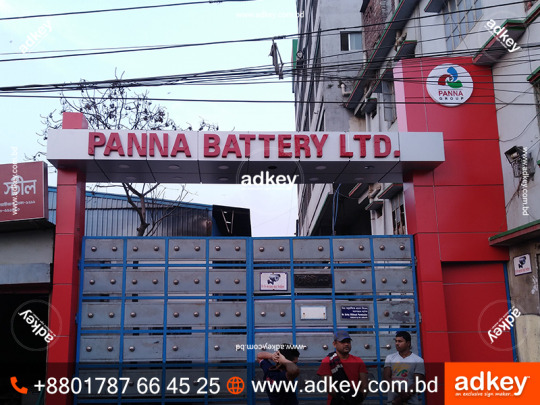
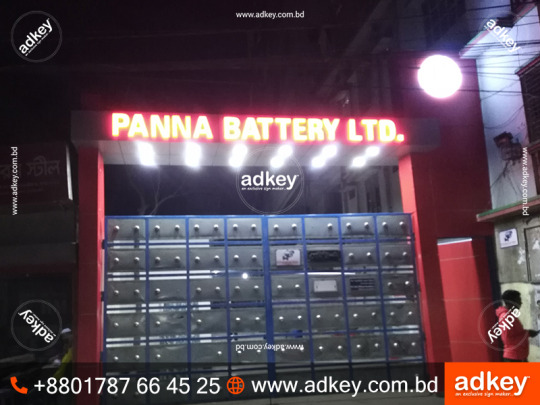

LED Sign Acrylic Top Letter , LED Lighting , Neon Lights Box Led Sign , Outdoor Light , LED Display Board , Indoor Signage price in Bangladesh.
Explore online marketplaces such as Alibaba, Made-in-China, or TradeIndia. Many suppliers list their products on these platforms, and you can find a variety of options.
Visit local electronics markets in major cities like Dhaka. These markets often have a concentration of electronics suppliers and manufacturers.
sign board, led sign bd, led sign board, led board sign, led signage board. Acrylic ss letter bd price in bangladesh, Acrylic ss letter bd price, Acrylic ss letter bd near me, Acrylic ss letter bd design, acrylic sign board price in bangladesh, led display board suppliers in bangladesh.
led sign bd, led sign board, led signage board, led board sign, led signs, digital sign board, led sign board price in bangladesh, sign board with light, lighting sign board, signage board with light, sign board light, led sign board design, sign board bangladesh, led name board price, name board for shop with light.
A great Neon and Led sign is an amazing home accessory and also ideal for business purposes. Do you want to create your own glow decoration that could enhance your own place or bring your party to the next level?
Now customize your dream neon! It can be a lighting tool to light up your place, and a lovely decor for your salon, coffee shop. Talk to us for more neon decoration ideas!.
acrylic sheet, acrylic sheet price in bangladesh, acrylic board price in bangladesh, plastic sheet price in bangladesh, rfl acrylic sheet price in bangladesh, transparent plastic sheet price in bangladesh, transparent sheet price in bangladesh, acrylic sheet price in bangladesh daraz, acrylic sheet shop in dhaka, acrylic sheet price in dhaka acrylic, sheet price in bd, acrylic sheet price.
Our Service:
All Kinds of Led Sign, Neon Sign, Led Sign Board, Name Plate, Billboard, Digital 3D Print, Pana lighting board, Bata model board, Shop Sign. We provide Lighting Sign Board, Acrylic Sign, Moving Display, Profile Box, Fair Stall & Event Management Ad Etc Advertising Service All Over Bangladesh.
Contact us for more information:
hotline: +8801787664525
e-mail: [email protected]
Visit our site:
website: www.adkey.com.bd
https://lnkd.in/eDe-JMpy
Office Address:
House: 395/k, Mazar Road, Section: 01, Mirpur, Dhaka-1216, Bangladesh., Dhaka, Bangladesh
Instagram Page: https://lnkd.in/eQEyzXRu
Youtube: https://lnkd.in/e7yeQ7Rf
hashtag#led_sign_bd hashtag#neon_sign_bd hashtag#nameplate_bd hashtag#led_sign_board hashtag#neon_sign_board hashtag#led_display_board hashtag#aluminum_profile_box hashtag#led_light hashtag#neon_light hashtag#shop_sign_board hashtag#lighting_sign_board hashtag#shop_sign_bd hashtag#billboard_bd hashtag#acrylic_sign_board_price_in_bangladesh hashtag#profile_box_bd hashtag#backlit_sign_board_bd hashtag#bell_sign_bd hashtag#dhaka_sign_bd hashtag#sign_makers_bd hashtag#ss_sign_board_bd hashtag#moving_display_bd
hashtag#aluminum_profile_box_bd hashtag#ss_top_letter
hashtag#led_sign_board_price_in_bangladesh hashtag#neon_sign_board_price_in_bangladesh hashtag#digital_sign_board_price_in_bangladesh hashtag#name_plate_design_for_home
hashtag#nameplate_price_in_bangladesh
hashtag#neon_signage hashtag#led_signage
#marketing#design#neon sign#led sign#advertising#business#shop sign#architecture#buildings#interiors
2 notes
·
View notes
Text

Flower Knows Make-up Haul
Price after discounts: 2960 php / 54 usd (excluding shipping)
I've been seeing this a lot on Shopee but I never considered getting them since I don't normally use cosmetics from China, I prefer Korean brands which suits my skin better. But because I recently purchased BNB (barenbliss) that is manufactured in China, I decided to give Flower Knows a try.
Here's a video:
youtube
Flower Knows is really different from the minimalist design of K-cosmetics BUT I really love how pretty their products look. I could almost feel sorry for using the blush and ruining that pretty embossed design, and if I am being honest ... I would probably just keep these for display. My favorite is obviously the eyeshadow palette and I love this beige and muted pink colors. It's good for my everyday look. The blush is too light for me but I prefer 04 since 05 is too pink (I prefer peach-toned blushes). The lipgloss is really nice too although I admit, I got this only because the packaging is really pretty. Lastly, loose powder that I end up getting because it was on sale.
Would I purchase more? Probably, but I need to tone it down since I won't be able to use most of them.
01.16.2023
#flower knows#flowerknows#douyin#cbeauty#chinese make-up#make-up#aesthetic#coquette#rococo#pink#mermaid#princess#lolita#cosmetics#Youtube
3 notes
·
View notes
Text
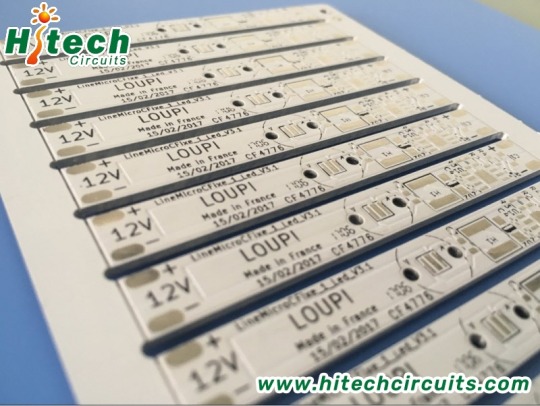

Aluminium PCB
Aluminium PCB are metal-based, copper-clad laminates with a good heat dissipation function. Usually, Aluminium PCB is refer to LED PCB board, which is the most important part of LED display and lighting products, etc.
Hitech Circuits Co., Limited is a professional aluminum pcb board, LED PCB manufacturer in China. Through 10 years of aluminum pcb board designing and manufacturing experience, Hitech are able to provide high quality and cost effective single layer, double layer and multi layer aluminum pcb boards to global customers. For any of your requirements regarding aluminum pcb board, please don’t hesitate to contact [email protected]
#Aluminium PCB#aluminum pcb#pcb assembly#pcb#engineering#technology#pcba#pcb manufacturer#pcbassembly#pcb design#hardware
5 notes
·
View notes
Text
A chandelier can be an ideal option for lighting in your home. Not just for foyers and formal dining areas, but chandeliers can also be used to provide lighting in kitchens, bedrooms, as well as the children's room. But before you go out and look for that perfect chandelier, here are some things that you need to consider.
Criteria For Buying Chandeliers
1) Size of the chandelier: The most important element to consider is the size. If not sized correctly, a chandelier will not be able to provide lighting as desired and may well not fit into its designated spot. So here's what you need to know about sizing a chandelier.
When choosing a chandelier for a particular room, you need to first measure the width and length of the room. Add these two measurements and the resultant sum (in inches) is how wide your chandelier should be. For instance, if your room is 14 feet wide by 16 feet long, you need to add these two numbers which gives you 30. Thus, the ideal width for a chandelier for this room will be 30 inches. However, you also need to consider the height at which the chandelier will hang. If you have low ceilings and the chandelier will hang quite low, you should buy a slightly smaller one (26-28 inches). But, if you have really high ceilings, then you should go in for a bigger one (34-36 inches). This is because the higher the chandelier, the smaller it is going to appear.
Another important size consideration is the length. A chandelier should be at least 30 inches above the table that it will hang over. This is the optimum height as it is high enough to leave adequate room to place things under the chandelier and is low enough to provide the desired lighting. Thus, after subtracting 30 inches from the top of the table to the ceiling, and 3-4 inches for the chandelier hook, the space left can be used to decide the length of the chandelier. Once again, you can be a little flexible here. If you usually use very tall centerpieces on your table, you should choose a chandelier that is a little shorter.
2) Type of lighting required: The kind of lighting that you need is also an important criterion to consider. Here are the various types of chandeliers used to bring about different kinds of lighting:
Ambient Lighting: If you wish to achieve ambient (general) lighting, you should go in for a big one, which has plenty of bulbs and open lights. This will ensure that the chandelier provides light for the entire room.
Accent Lighting: If you want to place your chandelier over something specific so as to illuminate that object, or if you want it to provide you with accent lighting for specific areas, then you should choose one with spotlights and down lights. A spotlight will help you to focus lighting on special works of art and help to bring about their beauty. With down lights, you can provide accent lighting for tabletops and other specific areas.
Diffused Lighting: Many people like to have sober diffused lighting in their home. They do not like the glare of very bright lights. If you too desire such lighting, you should choose a chandelier with uplights. An uplight will throw light on the ceiling which then gets diffused and provides a very warm glow. You can also choose a chandelier with shades as this will help to maximize the light filtering down but reduce the glare at the same time.
Thus, once you have decided on what type of lighting effect you wish to achieve, you can select a chandelier accordingly.
3) Style of the chandelier: As it is most likely going to be the center of attention in any room, it is essential that you choose a chandelier that has a look and style which is in keeping with the rest of your décor. You do not want to draw attention to your chandelier for all the wrong reasons after all!
While a traditional crystal chandelier can look at home in almost any setting, if you want to go in for an ornate wrought iron chandelier, or perhaps a contemporary one, it is important to first determine that such a design will match your home décor. Remember, while choosing a chandelier style, you want to go in for one that matches your décor and not contrasts with it.
In addition to the above, ease of cleaning, number of bulbs (depending on how much lighting you require), and your budget are the other factors to consider when choosing a chandelier.
Robin is the publisher of All About Chandeliers, your guide to finding the perfect chandelier for your home. Go to All About Chandeliers - Your Chandelier Guide [https://cnrlighting.com/] and brighten up your home!
#outdoor Lighting manufacturer China#high-end decor lighting manufacturer#lighting products supplier china#luxury lighting manufacturer china#luxury lighting supplier china#lighting products manufacturers china
0 notes
Text
youtube
Ford Exits Brazil as China's Largest EV Maker Buys Factory for EV Production
Ford Exits Brazil as China's Largest EV Maker Buys Factory for EV Production
P.S. This is not a surprise. The development strategy of China's auto industry was already published in 2017 and 2018, but everyone in the West pretended that this information did not apply to them! The big three American legacy automakers, who are passionate about big gasoline guzzlers, do not know how to correctly and efficiently produce reliable subcompact and compact cars, compact SUVs and small or medium-sized pickups at affordable price. Ford is actually having serious problems in Europe as well...
Secondly, legacy OEMs are absolutely unprepared for the competitive battle in the electric car market. They couldn't even imagine that such a global market for electric cars would emerge at all. They all hoped that Tesla would go bankrupt and that Chinese EV manufacturers would not be able to develop cheap LFP batteries for light passenger car and light utility vehicle industry for export outside of China.
Thirdly, US customs barriers, high taxes and anti-EV propaganda will not save the three obsolete American ICE vehicle manufacturers from losing global car market share and profits, because almost NOBODY buys and never will buy the huge American ICE pickup trucks and SUVs outside the US borders. There is practically no demand for such inefficient and huge ICE vehicles...
3 notes
·
View notes
Text

Mitsubishi F-2: the Japanese version of the F-16 Falcon
Fernando Valduga By Fernando Valduga 02/10/2022 - 23:07
Originally regarded as an all-Japanese fighter, it caused Japan to save significant expenses in the development of its F-2 light fighter, basing it closely on the U.S. F-16. Learn more about the multi-role fighter developed by Mitsubishi for JASDF.
During World War II (1939-45), the Japanese aeronautical industry designed and produced combat aircraft such as the Mitsubishi A6M Zero, which was very similar, in terms of technological quality and performance, to the most modern aircraft in the West.
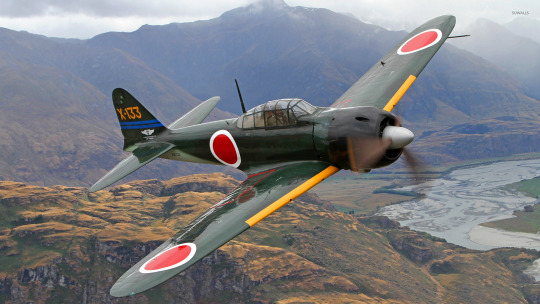
MItsubishi A6M Zero.
However, with its defeat in the war, in addition to having its industrial plant completely destroyed, Japan was prohibited from forming (classical) Armed Forces and, equally, from designing and developing military equipment, including combat aircraft, leaving the defense of the country in charge (exclusively) of the United States.
However, a few years after the end of the global conflict, the bipolar confrontation inherent in the Cold War (1947-91) in Asia, - like what happened in Europe with Germany (incorporated into NATO six years after its creation in 1955) - forced the US to review (albeit to a lesser extent compared to the German project of rearmament) its policy towards Japan, particularly due Japan in relation to Mainland China and the Soviet Union, forcing the legislation (now totally impeding) to be slowed down, allowing, in the context of this new geopolitical approach, to create a consistent Japanese self-defense force in three basic strands: land, naval and aeronautical.
In this way, JASDF (Japan Air Defense Force) began to use British and American-made aircraft, and, from 1952 (with the impasse in the Korean conflict), aircraft produced (totally or partially) on Japanese soil, with the withdrawal (albeit partially) of the previous restrictions on the Japanese development of aircraft, according to its own philosophy of copying existing technologies, improving and
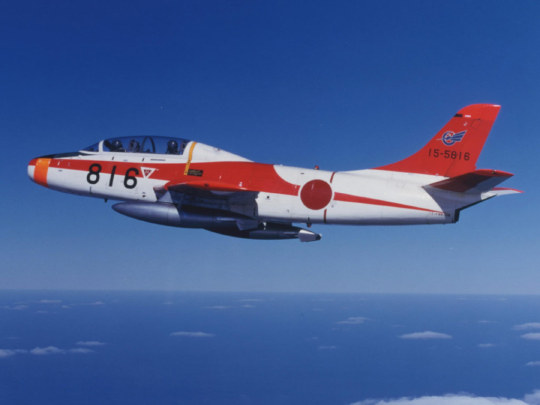
Fuji T-1.
As a result, as early as 1954 the project of the first jet military training aircraft was started and, in 1958, the Fuji T-1 (practically a Japanese version of the North American F-86 Sabre) carried out its first flight, with a total of 66 units being produced.
In the 1960s, JASDF already operated the American supersonic fighters F-4 Phantom II and F-104 Starfighter, giving rise to the need to train its pilots on a more capable and faster plane than the T-1.
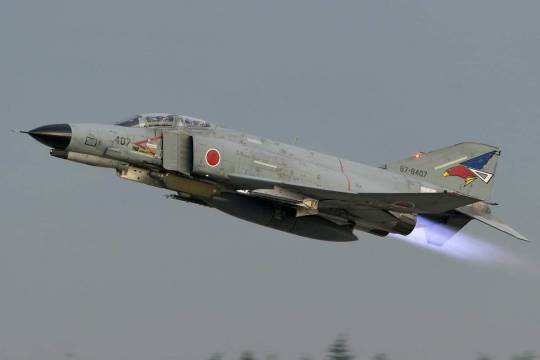
McDonnell Douglas F-4J Phantom from JASDF.
After many studies, it was considered about the possible advantages of manufacturing the European SEPECAT Jaguar aircraft in the country under license. The negotiations, however, were not successful, giving rise to the beginning of an aircraft project of its own (such as T-1), although (strongly) inspired by Jaguar.
In this tune, in 1971, the Japanese national industry managed to make a great technological leap with the launch of the Mitsubishi T-2, the first supersonic (training) aircraft developed and produced in Japan. 90 units of this aircraft were ordered in several versions, which served the JASDF from 1975 to 2006.

Mitsubishi F-1.
In the mid-1970s, the Japanese government decided, once again, to break with the paradigms, designing, developing and building its first combat aircraft based on its T-2 trainer, the Mitsubishi F-1, which had 77 units produced, maintaining the production and jobs of the local aeronautical industry.
In 1985, JASDF released the specifications for the acquisition of a new fighter, aiming to replace the F-1. The new aircraft should be able to load four anti-airy missiles, have no aerodynamic load limitation, be able to sustain loads from 3G (negative) to 9G (positive) and have a combat range of the order of 800km.

Mitsubishi T-2.
In that period, in addition to the F-1 "Supersonic ReiSen", - built and developed jointly by Mitsubishi Heavy Industries and Fuji Heavy Industries, endowed with a maximum speed of 1,700km/h and autonomy of 1,130km -, the Japanese also manufactured, under license from McDonnel Douglas, the iconic F-15 Eagle, being certain that, just as in the American Air Force
Not for another reason, in 1987, the governments of the two countries announced the development (together) of a version of the General Dynamics F-16 in partnership with Mitsubishi, which would be responsible for 45% of the development work.

In certain respects, this was another of the agreements that buried the exports (and even the construction in partnership) of the Northrop F-20 Tigershark, - the successor of the F-5A Freedom Fighter (and also the F-5E Tiger II) -, as a standard export fighter to the U.S. allied countries, leveraging the sales (direct and indirect) of the
Even though the U.S. and Japan are first-rate allied countries, curiously, the initial terms of the contract generated disagreements between the two sides. The Americans believed that the transfer of technology from such an advanced fighter could leave the Japanese industry in a privileged position in future competition with American companies, while the Japanese argued that they would share some (own) technologies without any consideration, even paying for the patents of various components of American technology.

Differences between F-16 and Japanese F-2.
Only in 1990 were all challenges finally overcome with the development of the new aircraft remaining divided in the base of 40% for the Americans and 60% for the Japanese.
The new aircraft was named Mitsubishi F-2 Viper Zero, in honor of the unofficial name of the (now Lockheed Martin) F-16 (and which ended up official in its latest version, F-16V) and the legendary Japanese fighter of World War II, and it is certain that this aircraft would be based on a larger version compared to the original design of the F-16.
The final price of each F-2 was, however, four times higher than the production value of an F-16 in America, even without taking into account the entire cost of the development of the aircraft.

Visually, the F-2 and the F-16 are very similar; however, some differences can be easily noticed, particularly in the outside: the wings of the F-2 have an area 25% larger than that of the original F-16; the horizontal stabilizer is also larger; the cabin of the F-2 is divided into three parts (to resist bird shocks), while the canopy of the F-16
In addition to the external differences, one can also mention the use of composite material in various parts of the aircraft, in addition to significant distinctions in armament and engine.

As the Americans did not want to give up the source code of the flight command system for the Japanese, they were forced to develop a completely new one, including considering the fact that the F-2 is heavier and has larger control surfaces and wing, in addition to having a different center of gravity from the F-16. For the elaboration of the new code, the results obtained with a modified F-2 aircraft for testing were mainly used. The first prototype of the F-2 left Mitsubishi's assembly line in Nagoya in January 1995, with the second taking off on its inaugural flight in December of the same year.
A total of four prototypes were built for flight testing and two for ground fatigue testing. The static and dynamic load tests revealed some weaknesses, especially in the newly designed wings, which were made of composite materials and, therefore, with innovative technology for the time. These findings were incorporated directly into the modification of series production, with the project proving, as a consequence, a great challenge for the Japanese aeronautical industry, since for the first time carbon fiber composite materials were used in the primary structure of an aircraft. The initial order of 141 aircraft has been reduced over the years and production was closed in 2011, with only 98 aircraft being manufactured, including the four prototypes.

It is timely to point out that the so-called "Japanese F-16" also has variants (competitors) in other countries that, from the original North American fighter, have also developed (licitly) similar aircraft, such as the South Korean KAI/Lockheed Martin T-50 Golden Eagle and the Israeli IAI Lavi, equipped with canards (which, due to the in J-11A Flanker B, which, in turn, was an authorized Chinese version of the Russian Sukhoi Su-27SK, locally assembled, or the J-16, a "replica" of the Russian Sukhoi Su-30).
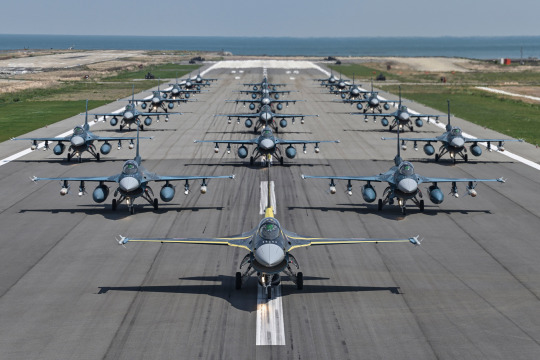
In 2020, in another bold step, the Japanese government began a selection process for the development of a fighter that is expected to replace the F-2 and F-15, like what the US managed to do 20 years earlier with the 5th generation stealth projects of the Lockheed Martin F-22 Raptor (winner of the competition with the Northrop YF-23) and the Lockheed Martin F
JASDF expects the new aircraft (with 5th generation technologies) to be fully operational from 2030. In this sense, a prototype for testing stealth technologies has already been built with the designation Mitsubishi X-2 Shinshin and has been flying since 2016.

It is worth noting that JASDF ordered 147 units of the F-35 Lightning II (which are already gradually being delivered) to maintain their air (qualitative) superiority over their opponents (notably China) and has not yet completely given up on making any partnership with Lockheed for the restoration of the production line of the F-22 Raptor, aiming at its acquisition, joint manufacture or

Reis Friede - Professor Emeritus of the School of Command and General Staff of the Army (ECEME), Honorary Professor of the School of Command and General Staff of Aeronautics (ECEMAR), Professor Emeritus of the School of Improvement of Army Officers (EsAO) and Special Lecturer of the Superior School of War (ESG).
Tags: Military AviationHISTORYJASDF - Japan Air Self-Defense Force/Japan Air Self-Defense ForceMitsubishi F-2
Previous news
U.S. Air Force lands most C-130Hs due to cracks in the propellers
Next news
Lilium reaches the milestone of the complete eVTOL transition in new video
Fernando Valduga
Fernando Valduga
Aviation photographer and pilot since 1992, he has participated in several events and air operations, such as Cruzex, AirVenture, Dayton Airshow and FIDAE. It has works published in specialized aviation magazines in Brazil and abroad. He uses Canon equipment during his photographic work in the world of aviation.
Related news
MILITARY
Swedish influenzas play a defensive role in the exercise of the Finnish Air Force
04/10/2022 - 12:00
MILITARY
Final project of the Future European Air Combat System will be launched in three years
04/10/2022 - 08:41
MILITARY
Sierra Nevada receives contract for support services for the Lebanon A-29s
03/10/2022 - 21:32
HELICOPTERS
U.S. Army orders more Boeing Chinooks Block II
03/10/2022 - 20:41
MILITARY
Thailand completes capacity updates of its C-130H fleet
03/10/2022 - 14:00
MILITARY
Ukraine shares drone video showing a Russian Ka-52 being shot down
03/10/2022 - 12:00
homeMain PageEditorialsINFORMATIONeventsCooperateSpecialitiesadvertiseabout
Cavok Brazil - Digital Tchê Web Creation
Commercial
Executive
Helicopters
HISTORY
Military
Brazilian Air Force
Space
Specialities
Cavok Brazil - Digital Tchê Web Creation
9 notes
·
View notes
Text
Why is Apple opening stores in India?
Why is Apple opening stores in India?
Apple CEO Tim Cook has opened the company’s first owned retail store in India, located in Mumbai, India's financial capital.

The move is the result of years of planning and meeting regulatory requirements, including local product sourcing. In order to emphasize China's growing significance, Apple plans to diversify its manufacturing footprint and grow sales in the nation of 1.4 billion people.
Apple's deals in India hit very nearly 6 billion bucks in the year through March. Apple has identified India's expanding middle class as a lucrative growth opportunity in light of the slowing global demand for technology and is increasing production there.
2 notes
·
View notes
Text
trying to think of like... how would I describe each laptop manufacturer on pure vibes. off the top of my head...
asus: we have more marketing and r&d budget then we can possibly spend on normal things. look, this one is coated in LEDs! this one has the keyboard in the wrong place! this one splits open! half of their premium product launches generate more youtube views than actual sales because by the time you consider buying one they're discontinued. high-end products can be quite good; midrange products are often a couple bucks too expensive because the brand name buys you some clout. spends a lot of cash to get floorspace at best buy. taiwan.
lenovo: a relative newcomer to the western market (they bought IBM's thinkpad division back in the day), used to be the kings of cost cutting on basically every part they could think of. if they've learned what parts are actually worth cutting costs on (and benefitted from the fact that these days 85% of the parts that exist are Actually Decent) there might be something there. primarily does direct online sales. mainland china.
msi: kind of hit on an identity when they made the first thin and light gaming laptop/"jack of all trades, master of none" device that was actually good, and continue to have a strong presence in that market. devices tend to be a bit on the hollow/flexible-feeling side, not necessarily in a bad way, but just in contrast to "ough that's solid but heavy." under-reviewed, imho. taiwan.
gigabyte: hey, we exist too! some cool stuff at the high end; primary drawback in the west is a reputation for spotty support if you don't speak mandarin since they just do less sales volume than the other Asian companies. mainland china
acer: budget, budget, budget. takes up a truly impressive amount of the low to midrange market with usable but unspectacular devices. once in a while they'll put out a premium-priced device and get confused reviews, like, "guys, this is just a budget laptop with a higher price tag???" known for pure gaming laptops with poor battery life, displays, keyboards, and trackpads but very competitive performance, and general use laptops that are very competent for the price tag if you can find the model that hit the right balance on all of the parts. taiwan.
lg: primarily known for the lg gram line of premium, very lightweight general-use laptops, which are pretty good. do they make anything else? korea.
samsung: yeah we make everything; sure, let's make laptops. very low volume kind of like lg, but a marketing behemoth like asus. korea.
framework: finally, a repairability-focused laptop that's actually good. only has one device (13" general-use) and it's a bit overpriced iirc, and you have some "we're a startup" stuff to deal with, but it's rare that you can take a moral stance and actually get a good product out of it. united states.
dell: kind of the flagship american laptop brand. does a bit of everything. competes with asus on the "solidly built, premium-priced, unnecessarily flashy gaming" front via alienware, with acer on the "budget-priced, competent enough gaming" front via inspiron, and with apple on the "best possible jack of all trades" front via xps. notably, has a huge refurbished store (dell outlet) with a ton of selection that's unmatched by any of the others. united states.
hp: guys we're just like dell! please believe us. used to be the other flagship american laptop brand for years and then idk they ran out of money or something and dropped most of their product lines. kind of like american acer now, I guess? united states.
apple: operating system differences aside, has a consistent standard of build quality, minimum part quality, relative reliability, and "having a working trackpad" that makes every windows laptop look like some sort of children's toy. (I am not joking: the 2008 macbook pro has a trackpad that has not been matched by a windows pc in 15 years. it is legitimately puzzling.) 2016-2019 missteps aside, 80% of the things one could list about a laptop have been multiple years ahead of the competition on the mac essentially forever. on the other hand, they're a gazillion dollars, you can't game on them basically at all, you're stuck with macos, etc etc. (the m1 macbook air in particular is so good that none of that even really matters, though. fingers crossed for the 15" m2 air to continue the trend and not be $1800.) united states.
microsoft: "look, we can match apple's build and display quality!" an extreme newcomer, specifically designed to push the windows platform in the fronts where apple traditionally ate their lunch. they absolutely have done that, and are years ahead of almost anyone else on those fronts. too bad they're constantly a year behind schedule with their hardware and only do premium pricing, had some reliability issues, and suffer from a "we glued the whole thing together and if it breaks it's unfixable" problem that they're only very recently engineering their way out of. still, managed to put a seriously compelling product (surface laptop) in the premium general-use device category until the m1 air came out. united states.
razer: "look, we can match apple's build quality in a gaming laptop!" a relative newcomer that made an incredible, unprecedented jump from a gaming mouse company to a moderate-volume premium pc manufacturer somehow. only sells to the ultra-premium gaming market (weird ultrabooks aside), but does a good job of it. united states.
clevo: the white-label manufacturer behind many smaller brands like ibuypower, maingear; often does comically huge desktop replacement style devices. taiwan.
origin/corsair: who knows, but knowing corsair (asus on bad steroids), it will be about 85% too expensive to be more than a curiosity. united states.
huawei, xiaomei: up-and-coming chinese phone manufacturers joining the laptop market a la samsung. hard to find or get service for in the west. notable because they had access to the high-end display panels that before recently only apple and microsoft used, and sold devices with them at much lower prices. mainland china.
3 notes
·
View notes